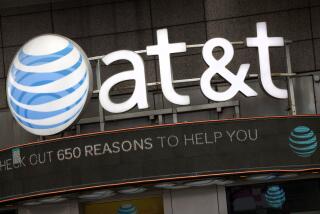Equifax’s data breach settlement: Everything you need to know
Consumers whose personal information was exposed during the 2017 Equifax data breach (that’s most U.S. adults who have credit) are finding themselves a bit confused by the avalanche of information that followed last month’s $700-million settlement announced by the Federal Trade Commission.
You can find out if you were affected by going to the settlement website (EquifaxBreachSettlement.com), and get yourself on the list for free credit monitoring and/or monetary compensation.
But the compensation you apply for may not be what you end up with. Watch for qualifiers such as “up to,” and know the limitations of the settlement.
Free monitoring or $125?
All affected consumers can get free credit monitoring. Or, if they already have credit monitoring, they can apply for alternative compensation of up to $125.
You are choosing between a guaranteed minimum amount of free credit monitoring or compensation that could be far less than $125, depending on how many people apply.
The free credit monitoring gives you four years of free monitoring from Experian that covers the three major credit bureaus: Equifax, Experian and TransUnion.
The lowest price Experian advertises on its website for that coverage is $19.99 a month. (Doing the math: Four years of that $19.99 monthly service would total $959.52.)
After the three-bureau monitoring expires, you can opt to have up to six years of one-bureau monitoring from Equifax.
If you already have credit monitoring and plan to keep it for at least six months, you can choose the cash option. You can get either a prepaid card or a check for your reimbursement.
You must have the monitoring in place when you apply. Note that it does not need to be credit monitoring that you pay for, according to FTC spokeswoman Juliana Gruenwald. The free monitoring you can get from some personal finance sites qualifies.
Settlement terms say that alternative reimbursement claims will be paid from a $31-million “bucket.” If there are enough claims to empty that bucket, the amount each person gets will drop as the pool of money is distributed proportionally.
What are the odds of getting the maximum $125?
There would need to be no more than 248,000 approved claims out of the 147 million consumers affected — or less than one-fifth of 1% — for approved applicants to get the full $125.
What about the time I spent protecting myself after the breach?
You can get “up to” (there are those words again) $25 an hour you spent on:
- Dealing with fraud that was “fairly traceable” to the breach, up to 20 hours, and you’ll need documentation.
- Freezing and/or unfreezing your credit, comparing and/or purchasing identity theft protection services, up to 10 hours, and you must certify that you are being truthful.
There is another $31-million bucket of money to cover claims for time spent. If it is exhausted, payouts will be reduced proportionally.
What about out-of-pocket costs?
The limit is $20,000 a person, and you’ll have to provide documentation. Those expenses can include credit monitoring after the breach, legal expenses, postage, notaries and more.
Those claims will be paid from the $380.5-million fund Equifax has set up to pay for monitoring services and to compensate consumers. If that payment is not enough to pay initial claims, there is an additional $125 million available. The money is split into various buckets for different kinds of claims.
The settlement administrator will decide if your claim for out-of-pocket losses is valid.
Is there a filing deadline?
You have until Jan. 22, 2020, to file for any of these remedies. You can apply online, print out an application form and mail it, or request that a form be mailed to you.
When will I get my benefits?
Not right away. If you choose monitoring, you’ll get information on how to activate it once the court finalizes the settlement. A final approval hearing is scheduled for Dec. 19.
Checks or prepaid cards for alternative reimbursement, time spent or out-of-pocket losses could take “several months or more,” according to the breach settlement website.
What if I have breach-related losses later?
If there is any money left to compensate consumers after the initial rounds of claims, there will be an extended claims period for losses that occur after the first deadline.
Consumers will be able to seek reimbursement for new out-of-pocket losses or time spent, but not for time and money spent protecting their credit such as by purchasing credit monitoring. You’ll have to certify that you have not already received reimbursement for the claimed loss. Claims must be made by Jan. 22, 2024, and will be paid on a first-come, first-served basis.
What if you change your mind?
The FTC offered some advice Wednesday to people affected by the Equifax data breach who were hoping to get $125 cash: Take the free credit monitoring instead.
The FTC said in a news release that “millions of people” have filed claims since the settlement was announced on July 22, and noted: “The pot of money that pays for that part of the settlement is $31 million. A large number of claims for cash instead of credit monitoring means only one thing: Each person who takes the money option will wind up only getting a small amount of money. Nowhere near the $125 they could have gotten if there hadn’t been such an enormous number of claims filed.”
Privacy expert and CyberScout founder Adam Levin agrees. He said if you were a victim of identity theft, even the full $125 would be “couch lint.”
But some consumer advocates disagree, arguing that credit monitoring merely alerts you that changes have occurred in your credit report after the damage has been done. The best choice, they say: Get a credit freeze at each of the three major credit bureaus; add on free monitoring available at many sources, and take whatever money you can get from the settlement.
I already filed, what should I do?
The option to revise your choice between credit monitoring and cash came after the settlement site was flooded with claims.
- If you chose the cash payment, look for an email from the settlement administrator, the FTC said. You’ll be given the opportunity to choose credit monitoring instead of the check or prepaid card you initially signed up for. If you don’t want to wait for an email, you can reach out to JND Legal Administration, which runs the settlement website, at [email protected].
- If you want the cash, no matter the amount, you will still need to respond to the email because you will need to provide the name of your credit monitoring service.
- If you haven’t yet filed, you still have plenty of time: The deadline is Jan. 22, 2020. But do set up a reminder for yourself so that you don’t forget.
The settlement website still appears to have some issues, and the Identity Theft Resource Center, a nonprofit that helps identity theft victims recover, says it’s wise to take your time.
“Filing without thinking through all of the possibilities or having all the supporting documentation could shortchange your identity hygiene in the long run,” a post on its website warns.
How can I protect myself now?
You can freeze your credit. Freezing credit can keep identity thieves from opening credit accounts in your name. It’s free and doesn’t hurt your score. As long as you are not actively seeking credit, there’s little reason not to freeze it.
If you need to unfreeze briefly, that process is also free.
In contrast, credit and identity theft monitoring are more useful for telling you when access has already happened.
O’Shea writes for Nerdwallet, where this article first appeared.
More to Read
Inside the business of entertainment
The Wide Shot brings you news, analysis and insights on everything from streaming wars to production — and what it all means for the future.
You may occasionally receive promotional content from the Los Angeles Times.









